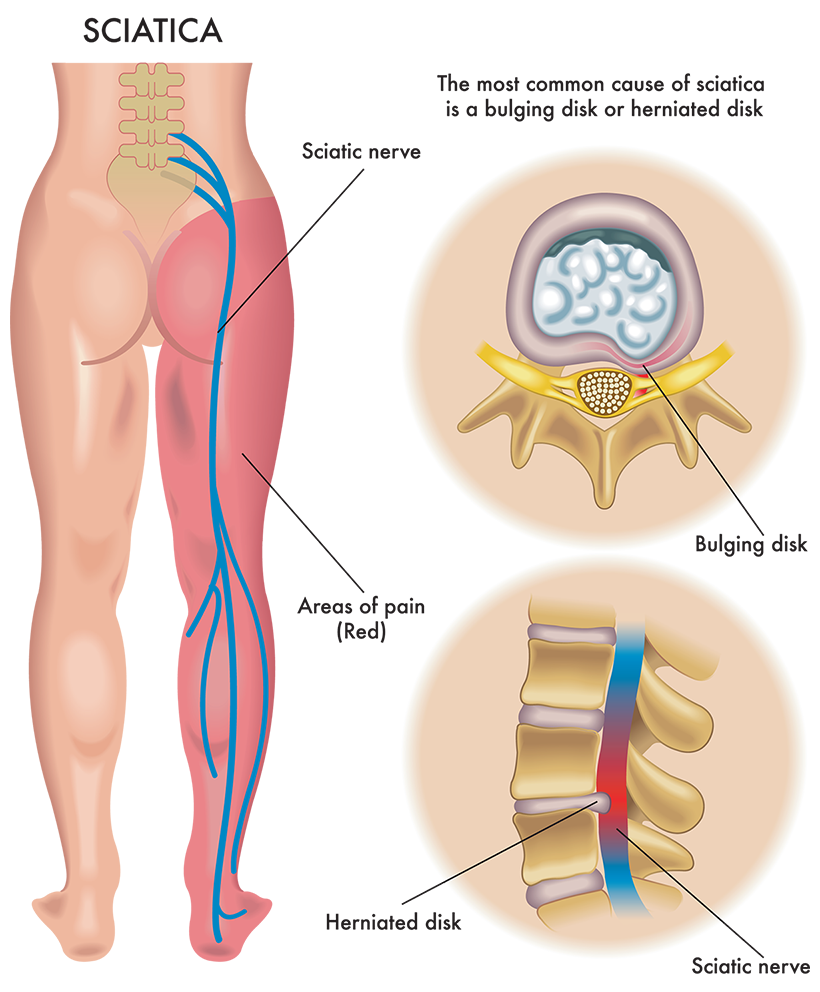
Anyone who has ever had sciatic pain will tell you it’s a pain in the butt—literally. The pain from sciatica tends to be one-sided and usually involves your lower back, hip, and the outside of your leg.
Your sciatic nerve is the largest and longest one in your body, and when it acts up the pain can be intense, deep, dull, and achy. It can keep you up at night and make your days miserable.
There are a couple of causes of sciatica, but the most common is from a herniated or bulging disc in your spine that puts pressure on nerves in the area, most notably your sciatic nerve.
Other causes include spinal bone spurs, stenosis (a narrowing of the bony openings in your spine), and something called piriformis syndrome.
Interestingly, piriformis syndrome doesn’t necessarily involve the spine, but is a spasm or tightening of a large muscle that runs deep in your butt. When the piriformis muscle becomes tight, it presses your sciatic nerve against your pelvis, causing pain and weakness that feels just like sciatica.
While sciatica can affect anyone, some common risk factors include being older, having excess weight, and lifting heavy objects frequently or incorrectly. In addition, people with diabetes may be more likely to have sciatica, as they are at a higher risk for nerve damage in general.
Some people who suffer from sciatic pain find that it subsides in three to four weeks on its own. However, this is not the case for everyone. Traditional treatments for sciatica include anti-inflammatory medications, cold or heat therapy, and gentle movement and stretching.
Many people find their sciatic pain to be persistent and intense and turn to acupuncture for relief. Both research and clinical results suggest that acupuncture can be a good idea.
In a recent study, Chinese researchers reviewed previous studies on the effectiveness of acupuncture in the treatment of sciatica. After analyzing a dozen studies involving over 1,800 people, they determined that acupuncture was more effective in treating sciatic pain than conventional Western treatments, both in reducing pain intensity and pain threshold (a physiological measurement).
Acupuncture works to relieve pain and promote healing in a number of concrete ways. It releases chemicals into your muscles and central nervous system and increases the release of neurotransmitters in your brain that reduces pain signals.
In addition, it promotes your body’s own pain-fighting opioid system. Where the needles are placed in your body, circulation is enhanced and the concentration of inflammation-reducing white blood cells in the area is boosted by as much as 40 percent.
If you visit an acupuncturist to help relieve your sciatica, you’re likely to find that they have several methods to help you. Besides acupuncture, they may apply electric stimulation to the area, use heat, perform bodywork, prescribe herbs, and send you home with stretches or exercises to speed up the healing process.
If you are struggling with sciatic pain, don’t suffer needlessly. Give us a call today to set up a free consultation and see if acupuncture can help you.
Click to get offer!
